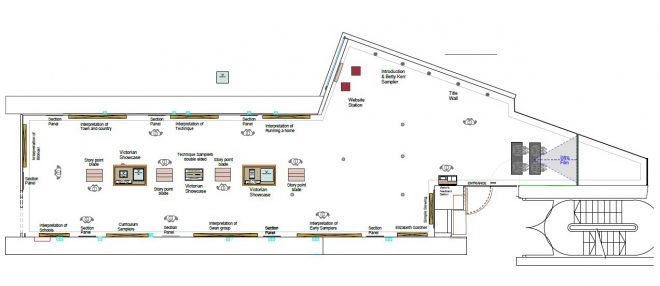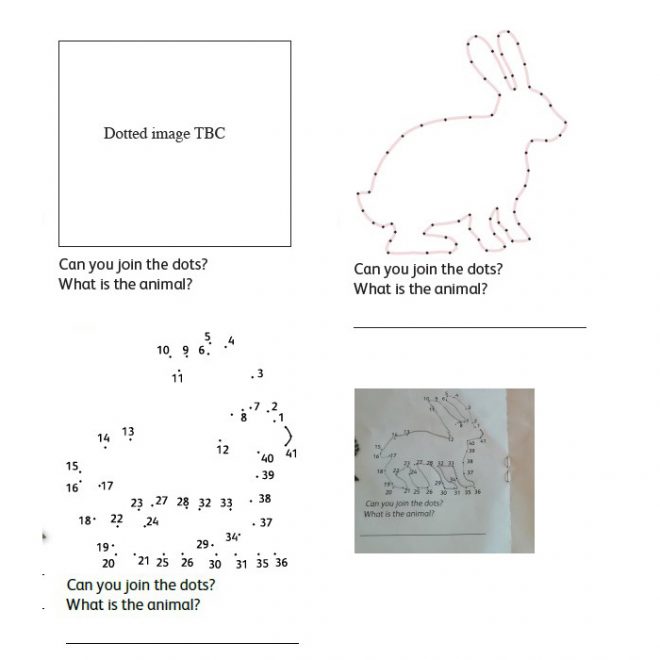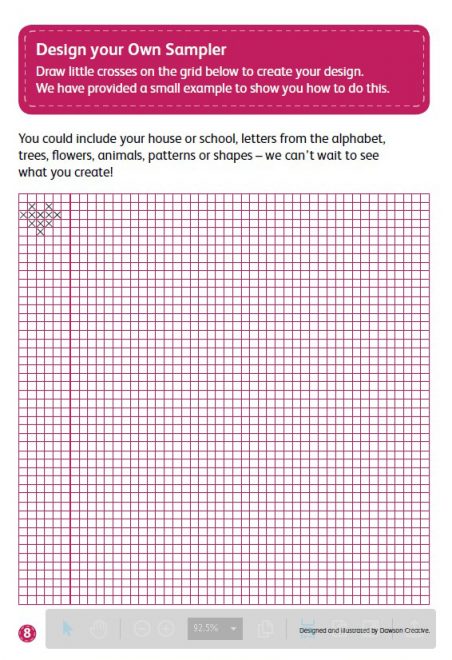Let’s go on a quest, an Embroidered Stories: Creature Quest! We’ll explore the mammals, reptiles, insects and birds sewn into these samplers long ago and see what we can find…

If you haven’t yet visited the free exhibition Embroidered Stories: Scottish Samplers (or even if you have) and you love animals or trails then why not have a go at this free trail? There are some copies available from the box just outside the exhibition or you can print the trail from the website or download it onto a smartphone here.
How it was created

Working with Helen Wyld, Senior Curator of Historic Textiles, and Jane Miller, Community Engagement Manager, we set about developing ideas for ways in which a trail could help visitors explore the samplers in the exhibition. As unique historical documents, recording the makers and what’s important to them, it soon became evident that we’d need to narrow down our subject matter. As much as we were tempted to look at the social changes, new alphabet letters and individual stories, we settled on animals due to the huge variety of them and their sense of fun. It was also interesting to think that the makers may have been going off pictures or finished samplers, having never seen the animal they were stitching.
We then considered the sorts of questions we might want to ask: Guess what this animal is? Can you spy an animal that is really small/big? Which animal do you think is most colourful? How many peacocks can you find? What’s your favourite animal in the exhibition? Whilst Helen was able to provide detailed historical insights, Jane brought her keen eye for accessibility and I was happiest pulling all the ideas together. So after much tweaking and experimentation (as seen in the drafts above), we finally had a draft trail that we were happy with.
Making the trail autism-friendly

From the beginning, we were eager for this trail to be an especially useful tool for autistic people. Trails help focus attention, provide structure to a visit, keep surprises to a minimum and are also a good way of reliving the museum experience after the visit. After doing some research (there are some useful links listed below) it became clear that including a reassuring map would be an essential element for making the trail autism friendly. Using the exhibition plan above we were able to simplify the map to mark out where the themes were and combine it with the first task in the trail – an animal hide and seek! Had the exhibition conditions been different, the map could have shown the loud/quiet, crowded/less crowded and natural/subdued light areas (as with the MET’s fantastic map linked below). However as the conditions throughout the exhibition are relatively unvaried, we settled with a wee message on the front of the trail noting that the lighting levels are low throughout and that there’s a loud video to the right when you enter.
Useful links relating to autism-friendly museum experiences:
- The National Autistic Society: Going to a Museum
- Kids in Museums: How can your museum better welcome families and young people with Autism?
- The Metropolitan Museum of Art: Sensory Friendly Map for Visitors on the Autism Spectrum

For the final touches, we enlisted help from many of our colleagues here at National Museums Scotland as well as from designer Mark Dawson who made the trail look so polished (and pink to match the exhibition colourings) and Autism Network Scotland who checked that the trail would be autism friendly. Running through the content in the fully installed exhibition, we were able to readjust the trail to the changes to the displays and section titles and help the trail flow better by adding details such as the hand turning each page and the dotted line running through the map from creature to creature. However, one of the trickiest decisions we had was when it came to choosing a suitable title. Suggestions ranged from Animal Adventure, Animal Encounters and Animal Expedition to Sewn Creatures, Creature Threads and Creature Challenge. After a litmus test in the Art & Design and Digital Media office, ‘Creature Quest’ triumphed.
When Embroidered Stories: Creature Quest was launched at an Early Doors for Autism event on 1 December 2018, it was fantastic to see the trail finally being used and enjoyed within the exhibition space. It was also great to see the rabbit dot-to-dot being filled in by the participants and coming to life.
Over to you

So, over to you, if you fancy having a go at the Creature Quest we really do hope you enjoy it. It has been a really stimulating project to work on and an absolute pleasure to create so we’d love for as many people as possible to be able to enjoy this animal trail, whatever your age or background. Plus, if you’re feeling extra creative and inspired, we’d love to see some pictures of your sampler designs from the final page of the trail, or even your final stitched sampler. And if you enjoyed this trail, why not check out the other Maps and Trails National Museums Scotland has to offer. Happy questing….
Get an insight into the lives of children in the 18th and 19th centuries through this unique collection of Scottish samplers on loan from American collector Leslie B. Durst.
Embroidered Stories: Scottish Samplers is on at the National Museum of Scotland until 21 April 2019.
